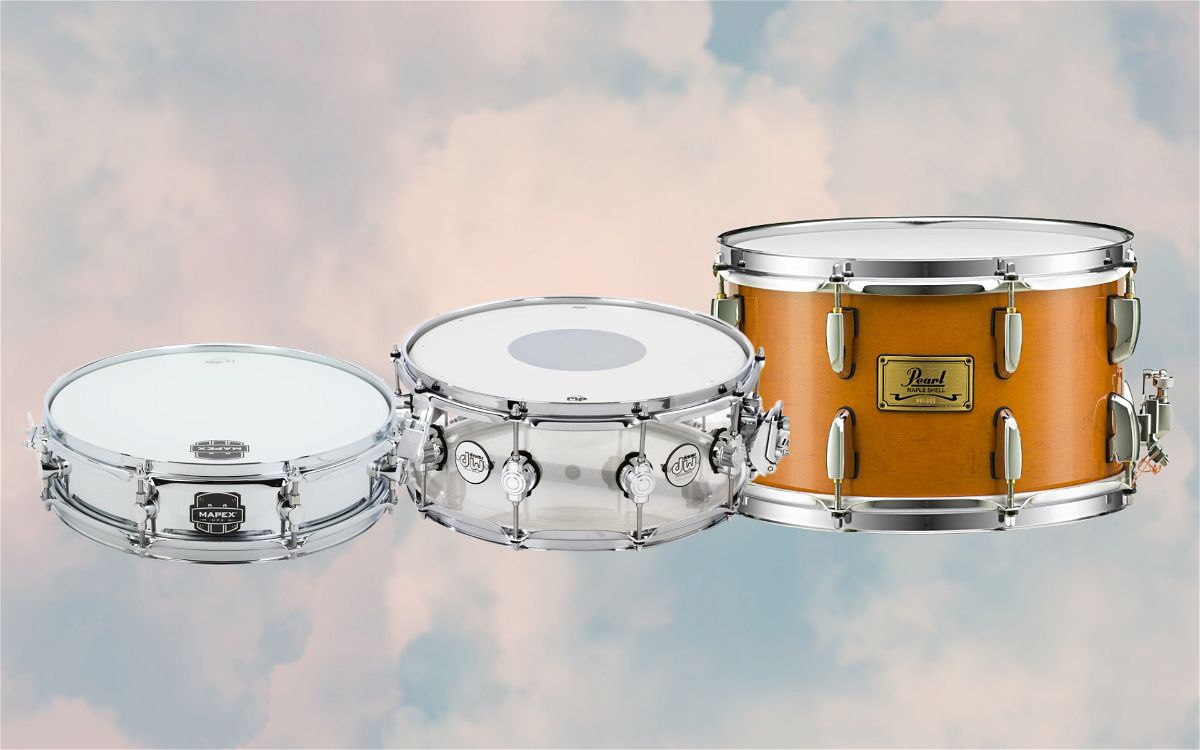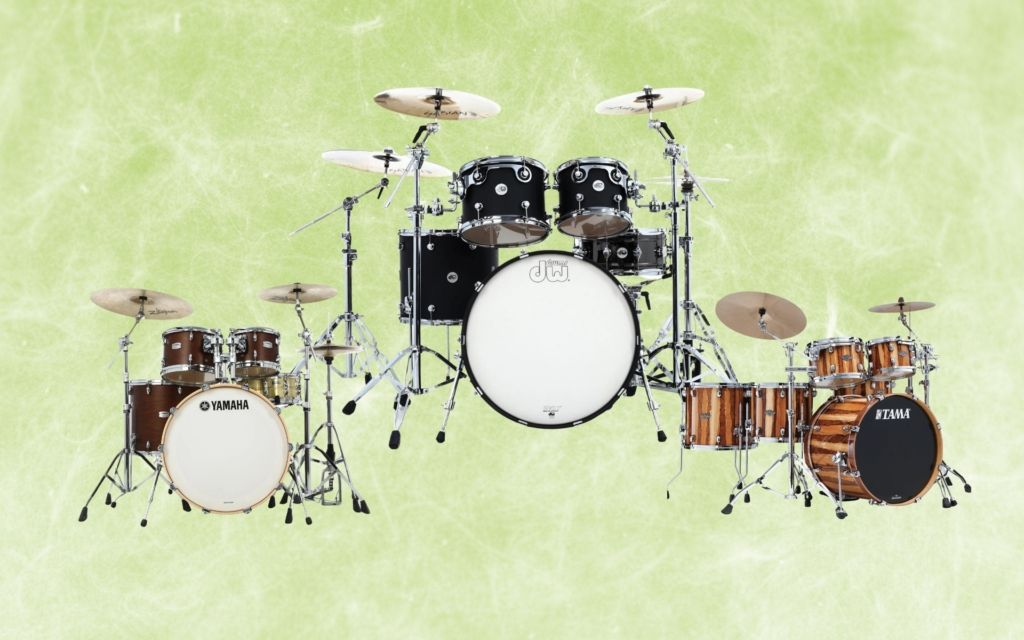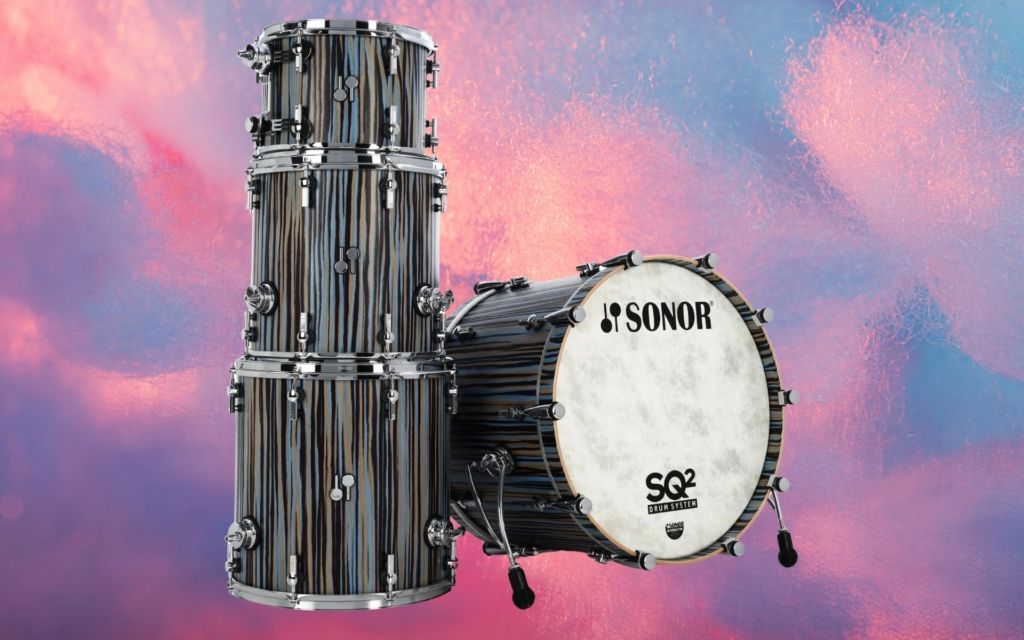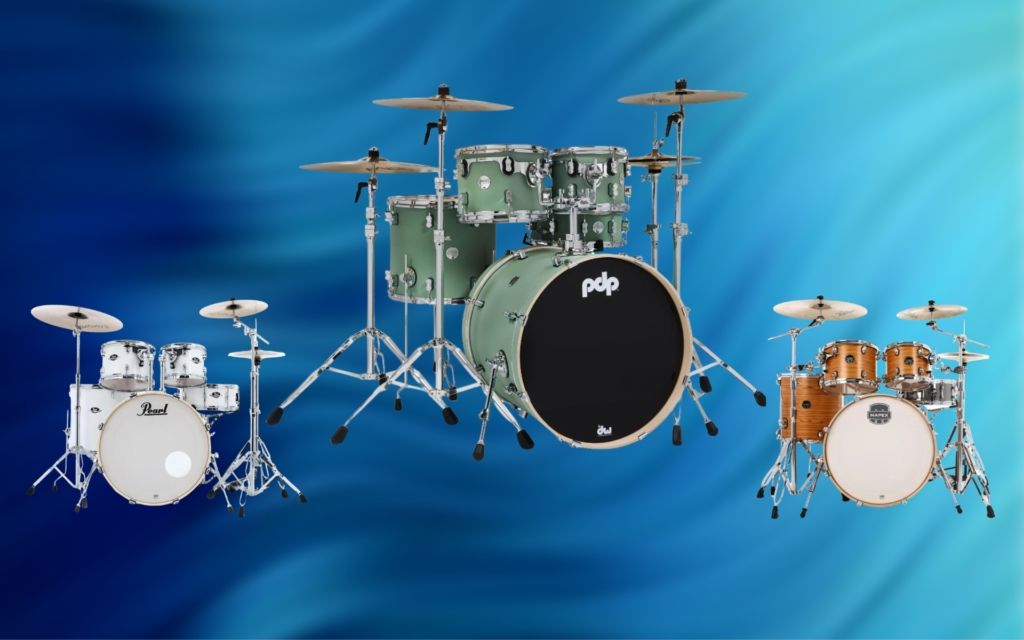The snare drum is arguably the most important part of a drum set. It serves as the rhythmic backbone and sonic centerpiece of the kit.
Each drummer has their own preferences when it comes to snare drums. This includes their shell construction, size, and tuning.
Snare drums can be made from an array of different shell types, each imparting its own distinctive characteristics to the sound.
This guide is tailored to help you understand all the different types of snare drums available, the shell types used in their construction, and the different sonic qualities they have to offer.
Contents
Types of Snare Drums
There are various types of snare drums used in the music world, and each is suited best to different musical applications and scenarios. Here’s a rundown of the most popular types of snares:
Drum Kit Snare Drum
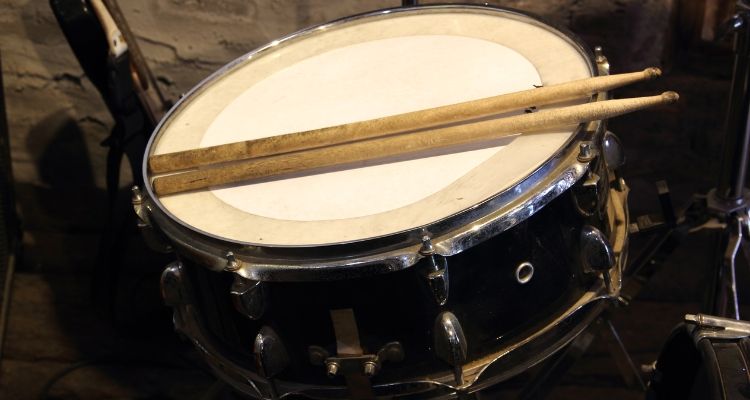
A drum kit snare drum stands as a critical component of any standard drum set. The default choice for rock, pop, jazz, and other popular music genres, it’s known for its crisp sound that cuts through the mix.
Commonly sized at 14” in diameter and ranging from 5” to 8” inches deep, its versatile tone records well and is perfectly suited to live performances.
Concert Snare Drum

Concert snare drums are similar to regular drum kit snares, but they are specifically designed for orchestral performances.
These drums are required to be very tight sounding and responsive to all playing dynamics, and are finely tuned to make them ideal for classical music pieces.
Concert snares will typically sound drier and come equipped with concert specific snare wires.
Marching Snare Drum

Marching snare drums are much deeper snare drums that are designed for marching bands and drum corps. They are larger and heavier than other types of snare drums.
Marching snare drum heads are usually made of Kevlar to withstand the aggressive playing style required in marching performances. The increased size and kevlar heads allow these drums to produce a powerful sound that can cut through the outdoor environment.
Piccolo snare drum
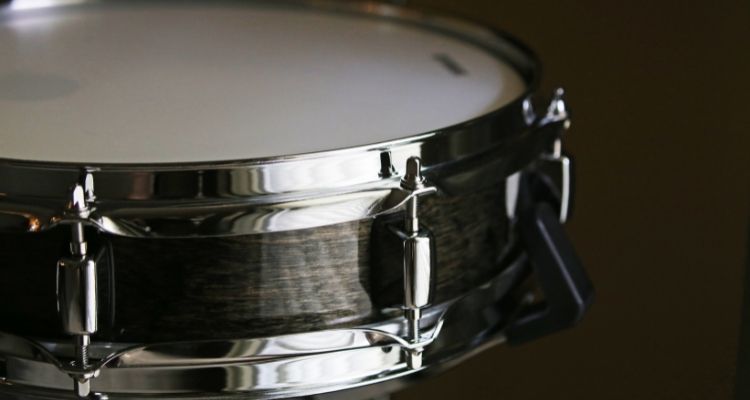
A piccolo snare drum, often referred to simply as a “piccolo,” is a type of snare drum that has a shallower shell depth and a higher pitch compared to standard snare drums.
Piccolos are normally 13” or 14” in diameter and have a depth of approximately 3” to 4.5” inches. They produce a bright, crisp, and tight tone with a quick decay.
Soprano Snare Drum
Soprano snare drums are typically sized at 12” in diameter and they have a deeper shell depth than normal snares, often around 7” inches deep.
These types of snare drums have a high-pitched sound with more body in the sound thanks to the deeper shell.
Firecracker Snare Drum (Auxiliary Snares)

Firecracker snares are much smaller types of snare drums often used as secondary, auxiliary snare drums.
They have smaller shells sized at 10” or 12” inches in diameter, and they have shallow depths similar to a piccolo, helping them to produce an explosive and lively sound. The sharp, cutting sound is similar to the sound of a firecracker.
Snare Drum Materials
The material of a snare drum can have a significant impact on its tone and overall sound. Different materials produce varying characteristics in terms of brightness, warmth, projection, and sustain.
Here are the most common snare drum materials and their effects on tone:
Wood Snare Drums
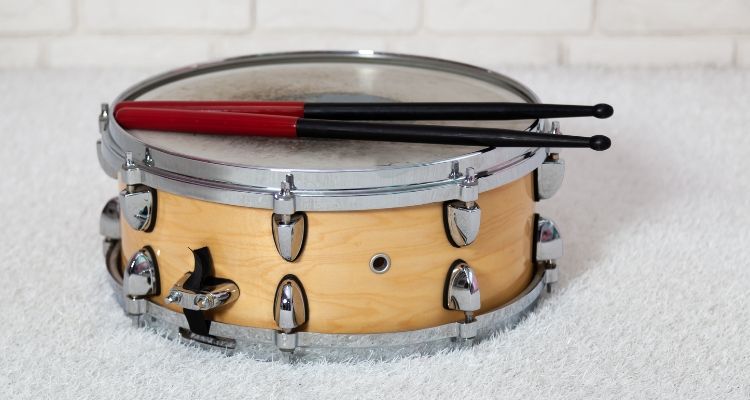
Birch
Birch is a popular wood choice for snare drums due to its bright characteristics. It offers a bright and crisp sound, making it ideal for drummers who want their snare to cut through the mix.
Birch has excellent projection and sensitivity, allowing for precise articulation and rapid response. This wood also provides a balanced tonal range with pronounced highs and mids.
Drummers appreciate birch’s durability, as it can withstand heavy playing without losing its tone quality.
Maple
Maple is the most popular choice of wood for professional level snare drums and drum sets thanks to its balanced frequencies and tonal projection.
Maple is widely used for snare drums due to its versatility and balanced response, offering a warm yet articulate sound with a wide dynamic range that suits a variety of musical styles and genres.
Its characteristic tone features a rich low-end, well-defined midrange, and smooth highs, providing a pleasing blend of warmth, depth, and clarity.
Beech
Beech is known for its dense and sturdy nature, and beech shells offer a warm and balanced sound with excellent projection.
Beech is a favored choice for snare drums due to its excellent sensitivity and versatility across different playing styles. The natural characteristics of beech give these drums a crisp attack, clear highs, and punchy lows.
It produces a balanced sound with a smooth and warm tone, offering a solid low-end, defined midrange, and crisp highs for a well-rounded and dynamic snare drum sound.
Walnut
Walnut is a highly desirable choice for snare drums due to its dark, punchy, and focused sound. It offers a distinct combination of warmth, depth, and projection, making it suitable for genres that require a fat and authoritative snare presence.
Walnut drums produce deep and punchy sounds that are well-suited for rock, funk, and blues music genres.
In addition to its sound qualities, walnut also has an attractive aesthetic appeal with its dark brown color and distinct grain patterns.
Oak
Oak is a less common wood choice for snare drum shells. It is known for its extreme durability and strength, making it perfect for producing loud, powerful sounds. Oak drums have a loud and dark tone with rich low frequencies and strong projection.
They provide great sustain and are often used in genres such as rock, metal, and country music where a cutting sound is desired. The dense nature of oak also adds to the drum’s overall resonance and responsiveness.
Bubinga
Bubinga is another very dense wood used for snare drum construction. Known for its rich and warm tone, Bubinga produces a deep and resonant sound that is highly sought after by drummers.
The dense nature of Bubinga wood creates a focused sound with excellent projection, making it ideal for both live performances and studio recordings.
With its beautiful grain patterns and reddish-brown color, Bubinga adds an aesthetic touch to any snare drum design.
Cherry
Cherry produces a warm and balanced sound with a slightly focused attack. Cherry drums have a natural resonance that enhances the overall tone, making them highly versatile.
Cherry offers a unique combination of warmth and brightness. It offers a balanced tonal range with a focused midrange, delivering a versatile sound that sits well in various musical contexts, from jazz to rock.
Drummers who prefer a rich and vibrant sound will appreciate the depth and character that cherry wood brings to their snare drums.
Poplar
Poplar is a common and fast growing hardwood that is a very common choice for snare drum shells in beginner drum sets due to its affordability and versatility.
Poplar produces a warm tone with a balanced mix of highs and lows.
This type of wood is known for its smooth resonance and good projection capabilities, making it suitable for various music genres.
With proper construction and hardware, poplar snare drums can deliver impressive sound quality without breaking the bank.
Ash
Ash is a favored choice for snare drums due to its high density and strong, resonant qualities. It produces a crisp and articulate sound with a well-defined attack.
It offers a punchy and cutting sound with a pronounced attack, making it ideal for genres like rock and metal where a strong and articulate snare presence is desired.
Mahogany
Mahogany drums are expensive and are becoming less common in snare drum manufacturing, but nonetheless there are still Mahogany snare drums available.
Mahogany is a very dense wood that has warm and rich tonal qualities.
These drums are known for their resonant and vibrant sound. They have a smooth midrange and a rich, warm low end, with slightly muted highs.
Metal Snare Drums
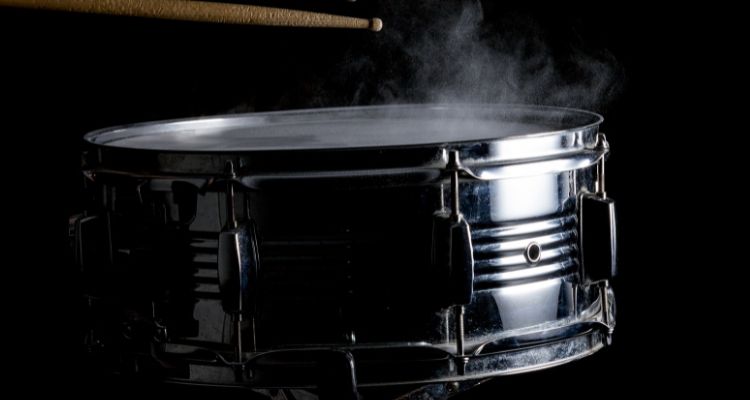
Steel
Steel snare drums are well-known for their bright and cutting sound. The steel shell provides a crisp attack and excellent projection, making it a popular choice among drummers looking for a bright and punchy sound.
The versatility of steel snare drums allows them to easily cut through live performances and recordings, providing a punchy sound that is well-suited for rock, metal, and other high-energy styles of music.
It offers excellent projection and crispness, with a focused and articulate tone that works well in modern genres, especially rock and metal.
Brass
Brass is a very popular material used in snare drums, and particularly on high-end snare drums.
Brass snares offer a bright and crisp sound with great projection. Brass snare drums are known for their warm tones and cutting presence, making them suitable for various musical genres, including blues, rock, pop, and jazz.
Drummers love brass snare drums for their versatility and ability to cut through the mix while having a smooth tone, making them an excellent choice for live performances or recording sessions.
Aluminum
Aluminum snare drums have a bright and focused sound, with a good balance between warmth and attack.
They produce sharp and crisp tones, and also have excellent projection properties, allowing your snare drum to cut through the mix with ease.
With enhanced sensitivity, aluminum snares are similar to steel snares but have less ‘bite’ overall, these drums still offer a focused and cutting tone that suits genres like funk, pop, and fusion.
Copper
Copper offers a distinct sound with rich tonal characteristics. Copper snare drums have darker, warm and full-bodied tones, producing a deep resonance and excellent projection.
These drums have a smooth and balanced response, making them particularly suitable for genres like jazz, blues, and rock. The unique properties of copper give these snare drums a unique sonic character that sets them apart from other materials.
Bronze
Bronze is known for its warm and rich sound, with a balance between brightness and depth. Bronze snare drums offer excellent projection and sensitivity, making them ideal for live performances or studio recordings.
The unique properties of bronze create a distinct tonal character that can cut through the mix without overpowering other instruments. Drummers who prefer a versatile and dynamic sound often choose bronze snare drums for their responsiveness across different musical genres.
Bronze is the most expensive metal used in drum shells, with bell brass snares costing thousands of dollars.
Other Types of Snare Drums
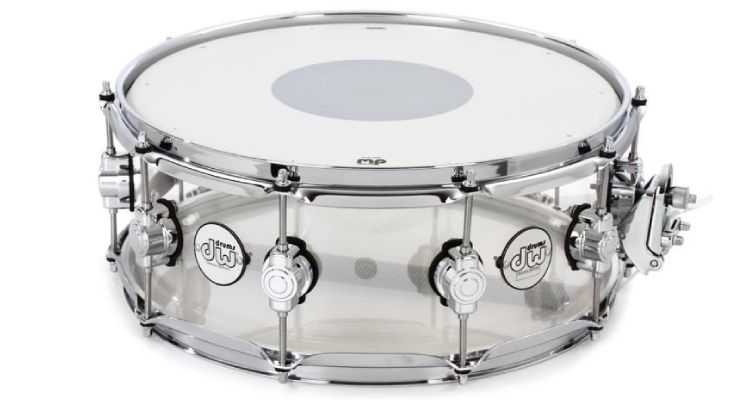
Acrylic
Acrylic drums produce a louder and punchier tone compared to wooden drums, with a lot of sonic “crack,” fatness, and tonal clarity.
When it comes to attack, acrylic drums excel. They offer a sharp and snappy attack and a cutting tone.
Acrylic drums are often favored in rock and metal settings due to their high attack and excellent projection. They also work well for pop and electronic dance music.
In addition to their sonic qualities, acrylic drums also have a unique visual appeal. Their see-through nature allows for drummers and audiences to see through them.
Carbon Fiber
Carbon fiber drums tend to produce a dry and controlled sound. They offer an even level of highs and mids with added warmth towards the lower end of the frequency spectrum.
This results in a balanced and focused tone that is well-suited for a variety of musical genres. Additionally, carbon fiber drums are often described as having a distinct clarity and articulation, allowing each hit to be pronounced and defined.
Solid Shell Drums
Solid stave snare drums are highly regarded for their exceptional sound quality, resonance, and craftsmanship. Drummers value these drums for their rich tone, versatility, and the meticulous construction techniques employed in their creation.
These drums are constructed by gluing together individual staves of wood, creating a solid shell without any ply layers. As a result, solid stave snare drums produce a very focused and punchy sound.
The sound of solid stave snare drums is often described as warm, rich, and resonant. These drums produce a full-bodied tone with excellent projection and sustain.
Conclusion
Understanding the different types of woods and metals used for snare drums is essential in achieving your desired sound.
Whether you prefer the warm tones of mahogany or the bright attack of birch, each wood has its own unique characteristics that contribute to the overall timbre and resonance of the instrument.
Take your time exploring and experimenting with different wood options to find the perfect match for your playing style and musical preferences.

